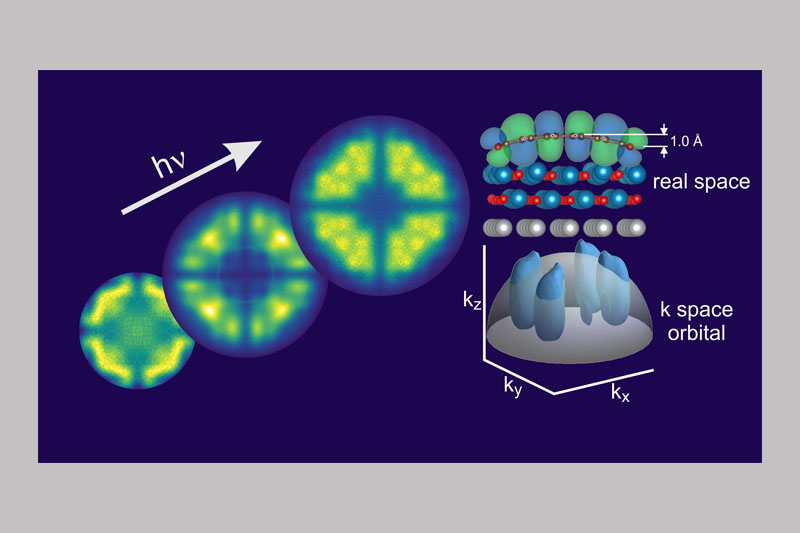The geometrical shape of fused aromatic molecules is determined by sp2 hybridization, resulting in a planar network of bonds whose electronic structure is characterized by a series of σ-orbitals and π-orbitals. The latter are characterized by electron density on both sides of the molecular plane. Due to this electronic configuration, the carbon skeleton of such molecules has a certain rigidity. Examples include small molecules such as benzene, but also larger one- and two-dimensional structures such as the linear acenes or coronene, up to graphene. Although these molecules are comparatively resistant to geometric distortions, the latter are often even desirable because they can have effects on chemical and optoelectronic properties.
In a recent paper published in the journal ACS Nano, resulting from a collaboration of the Surface Science and Computational Physics groups at the University of Graz with partners from FZ Jülich and PTB Berlin, it was shown that the molecular framework of the planar molecule PTCDA (perylenetetracarboxylic dianhydride) is strongly bent upon adsorption on a thin magnesium oxide (MgO) layer. The question arose as to how this geometric distortion could be quantitatively determined. To do this, the researchers used the photoemission orbital tomography (POT) method, which provides images of the electronic molecular states in momentum space. The experiments for this were carried out partly at synchrotron radiation sources and partly at the NAWI Graz core facility NanoPEEM. Specifically, the researchers exploited the photon energy dependence of the momentum space distribution of the photoelectrons emitted from the electronic states to make quantitative statements about the bend of the molecule in comparison with simulations based on density functional theory (DFT). Remarkably, the determined bend of the molecule is much larger on the dielectric MgO substrate than on a silver surface studied for comparison. This fact can be explained by the weaker polarizability and thus greater electronic hardness of the MgO. This work demonstrates the advantages of the POT method over other methods in determining geometric properties of adsorbed molecules.
Citation:
Philipp Hurdax, Christian S. Kern, Thomas Georg Boné, Anja Haags, Michael Hollerer, Larissa Egger, Xiaosheng Yang, Hans Kirschner, Alexander Gottwald, Mathias Richter, François C. Bocquet, Serguei Soubatch, Georg Koller, Frank Stefan Tautz, Martin Sterrer, Peter Puschnig, and Michael G. Ramsey
Large Distortion of Fused Aromatics on Dielectric Interlayers Quantified by Photoemission Orbital Tomography.
ACS Nano 2022, 16, 17435–17443. https://doi.org/10.1021/acsnano.2c08631
